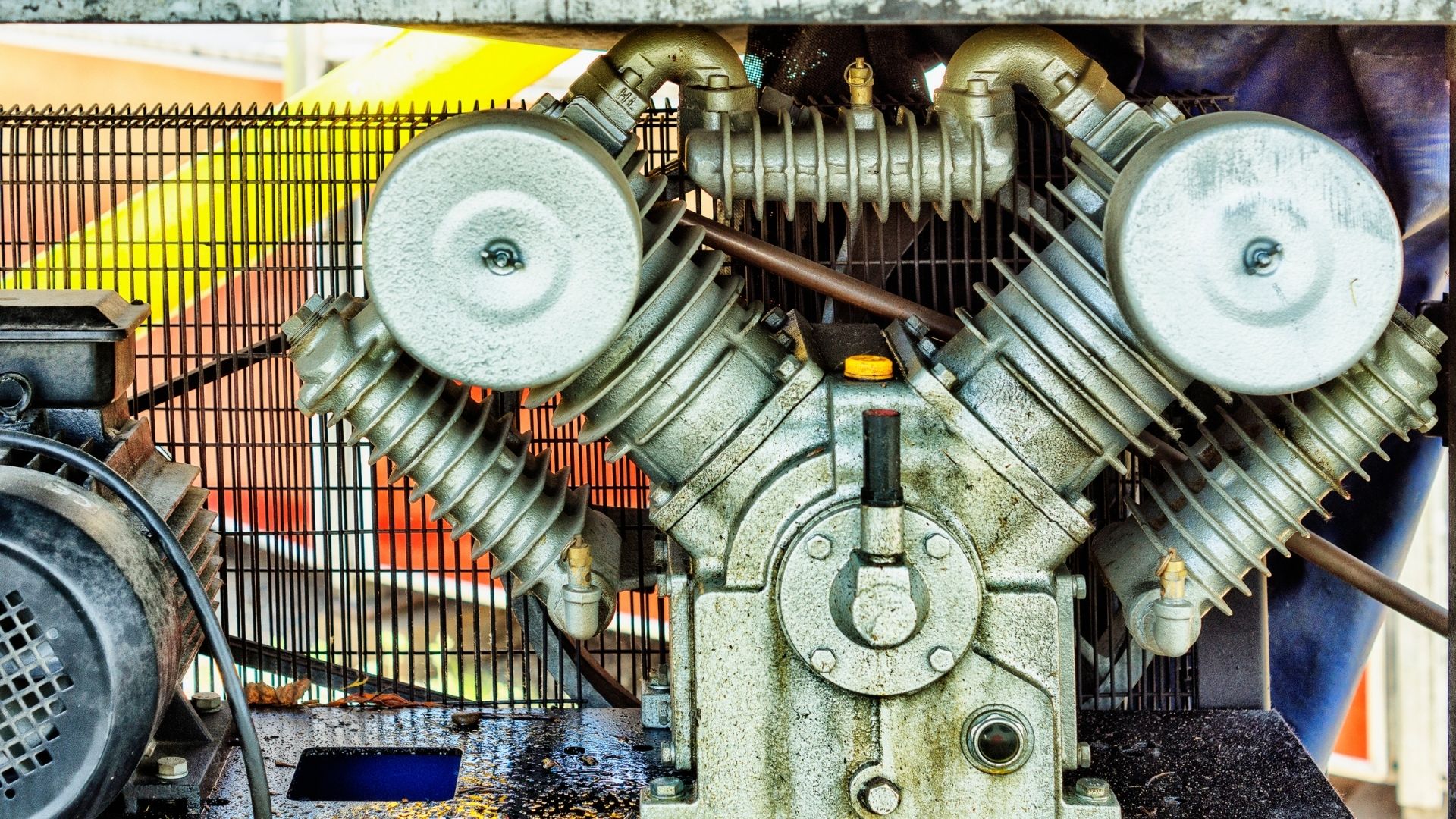A rotary screw air compressor works by trapping air between two meshed helical screw-shaped rotors. Air moves through the chamber as the screws rotate, coming in from the suction side and exiting via the discharge valve. The chamber is typically smaller near the discharge valve.
There are two types of rotary screw air compressors. These are oil-injected and oil-free.
Oil-injected
With this kind, oil is in the chamber cylinder walls and bearings – known as an ‘oil-bath’ or ‘oil-flooded.’ oil is also in the screw unit when compression occurs. After compression, most of the oil is siphoned out by a separator.
However, it doesn’t remove all the oil; some of the oil that passes through the machine along with compressed air is missed. So a tiny amount is carried over. In some industries, that’s a problem since the oil can contaminate goods or products.
“The oil in an oil-injected rotary screw air compressor serves two functions – it cools the air during compression and keeps the rotary screws lubricated. These compressors are also less noisy, cheaper, and typically last longer, but require more routine maintenance” – Hertz Kompressoren.
Oil-free
With the oil-free, gas is compressed in two stages while being passed through an intercooler. The intercooler helps decrease the temperature. That’s why the chamber cylinders and bearings on these compressors aren’t flooded with oil. Instead, these machines come with anti-corrosive materials and lubrication treatments.
However, oil-free compressors are typically higher in cost, prone to noise, and require more maintenance.
Components of a Rotary Screw Air Compressor
A lot of components make up a rotary screw air compressor. Let’s take a look at the most important ones.
- Rotors – Without rotors (or rollers), there’s no compression process. Rotors come in pairs and rotate at high speeds in a sweeping motion, enabling suctioned air to move through as it’s compressed and discharged.
- Motor – The compressor motor powers the rotating rollers that make air compression possible.
- Compression cylinder – The cylinder houses the rotors. The number of cylinders in a compressor unit determines how many compression stages and its pressurization capacity.
- Oil filters – These are used in oil-injected compressors and help remove oil from compressed air.
- Air filters – Helps keep the compressor clean plus operational by trapping moisture, dust, and air particles that can damage the machine.
- Bearings – These are located at both rotors’ ends to securely keep each in place and rotate evenly, including maintaining load balance. The parts are usually anti-friction and anti-corrosive.
- Discharge valve – At the end of the compression cycle, the air is released via the discharge valve for immediate use or stored in a holding tank.
- Suction valve – This is responsible for gas or air intake.
- System control – It monitors and displays the various components in a rotary screw air compressor, including its overall health plus output.
You now know more than most about rotary screw air compressors. These machines are typically used for large industrial and commercial applications or to power heavy-duty tools, such as jackhammers.



